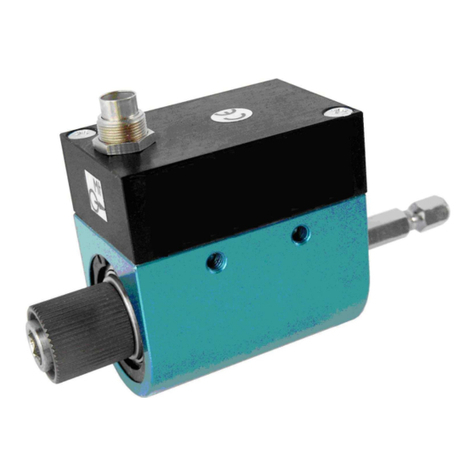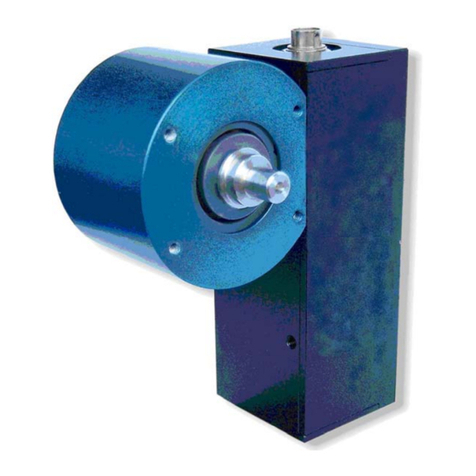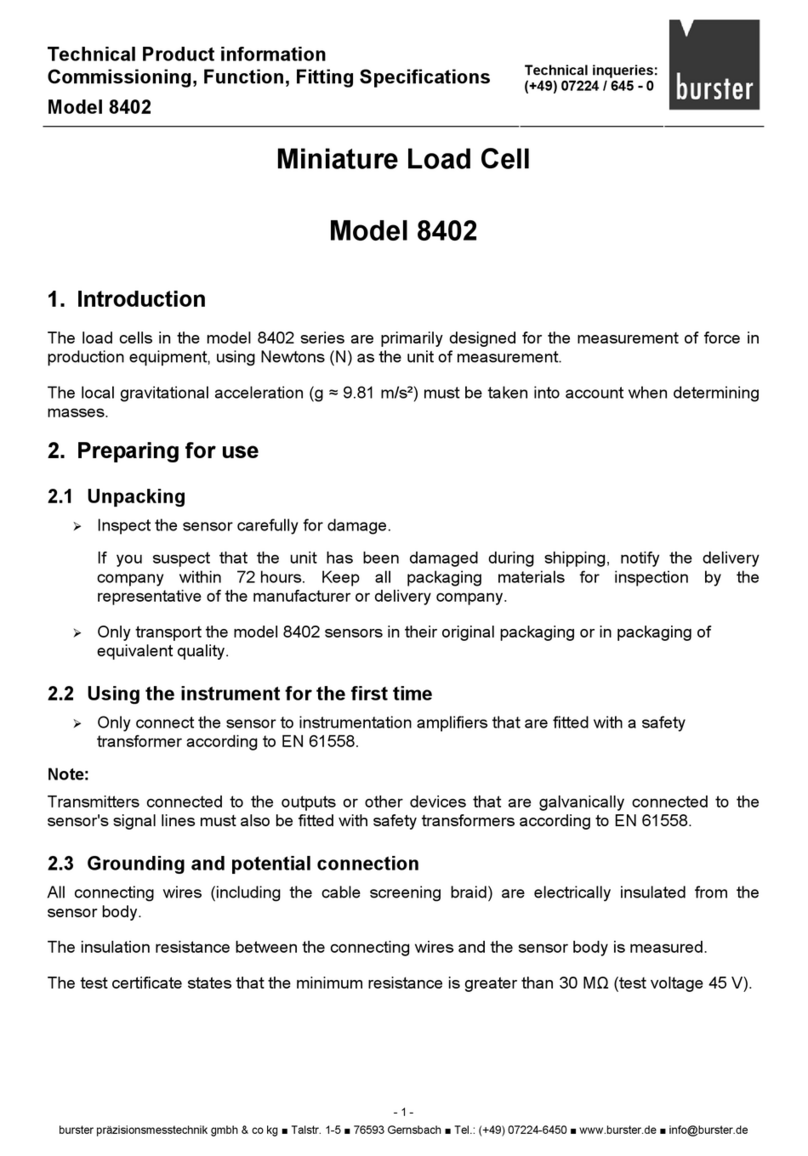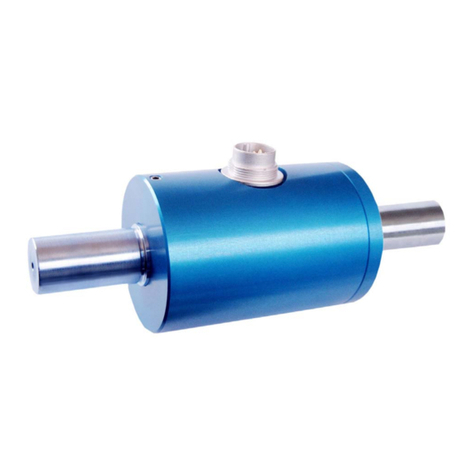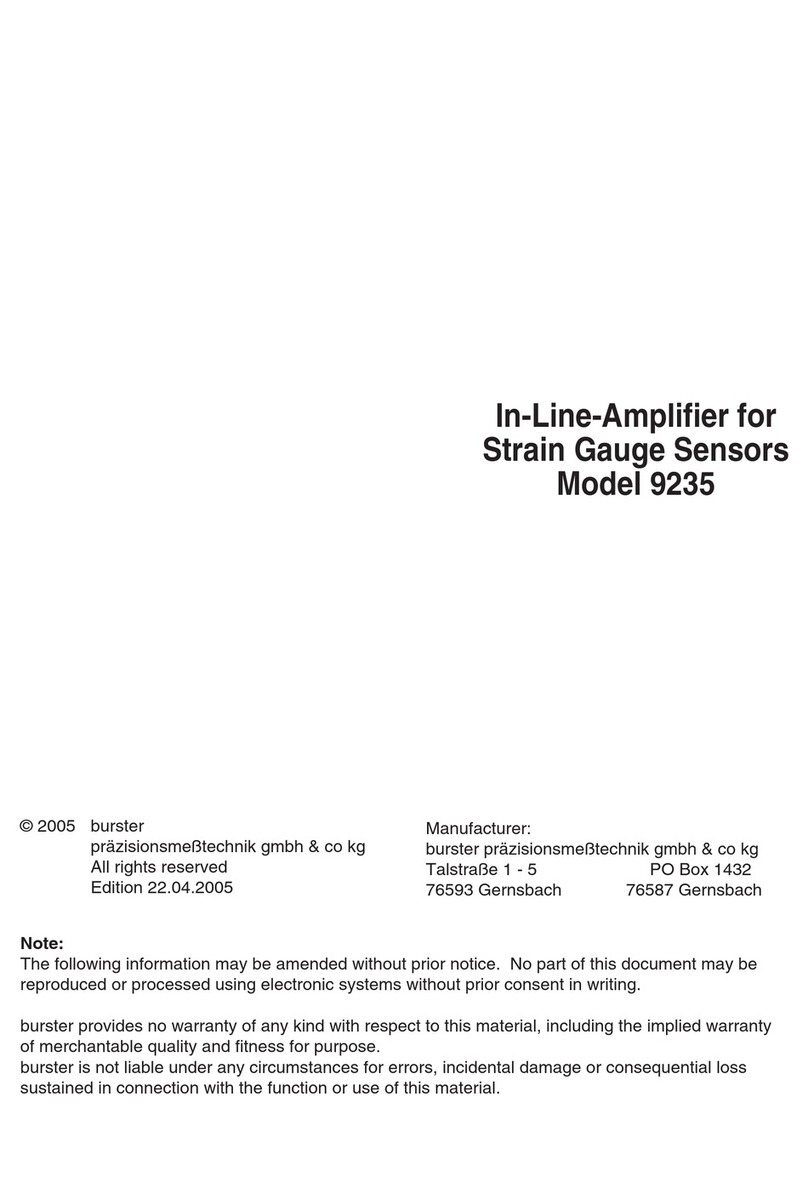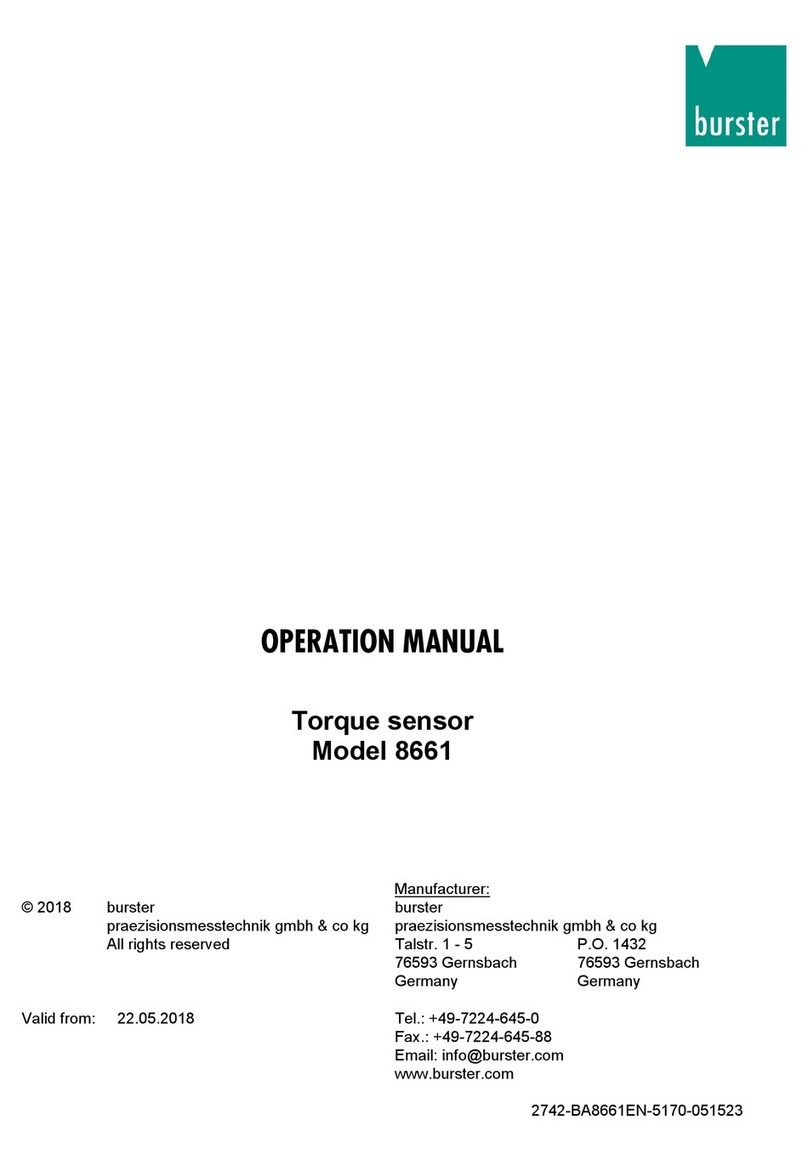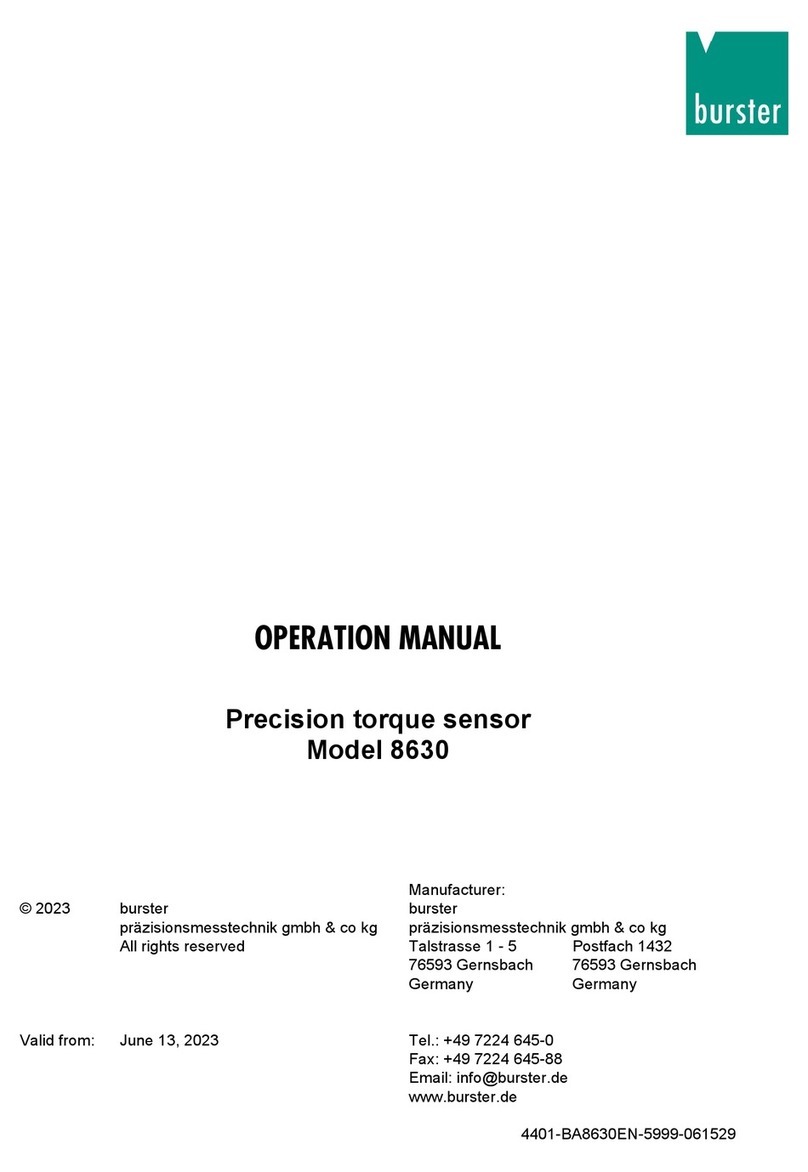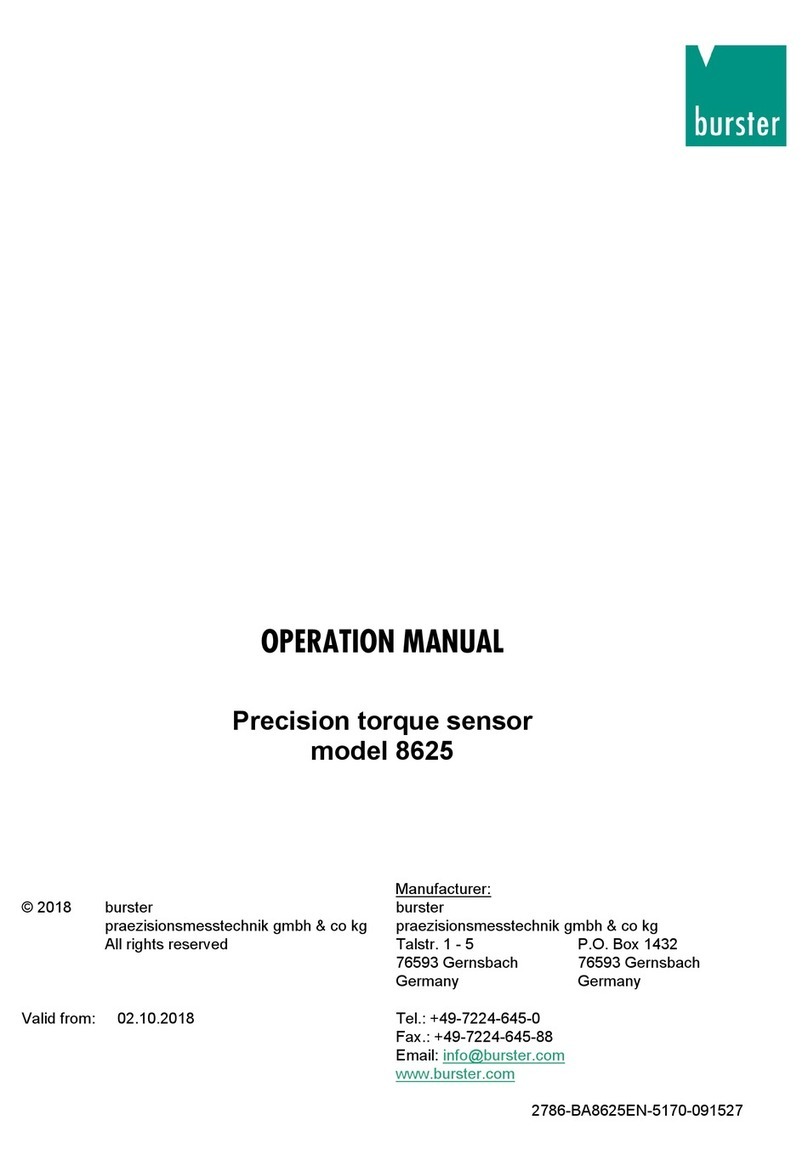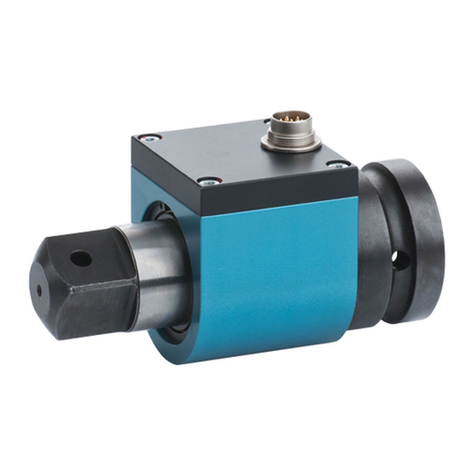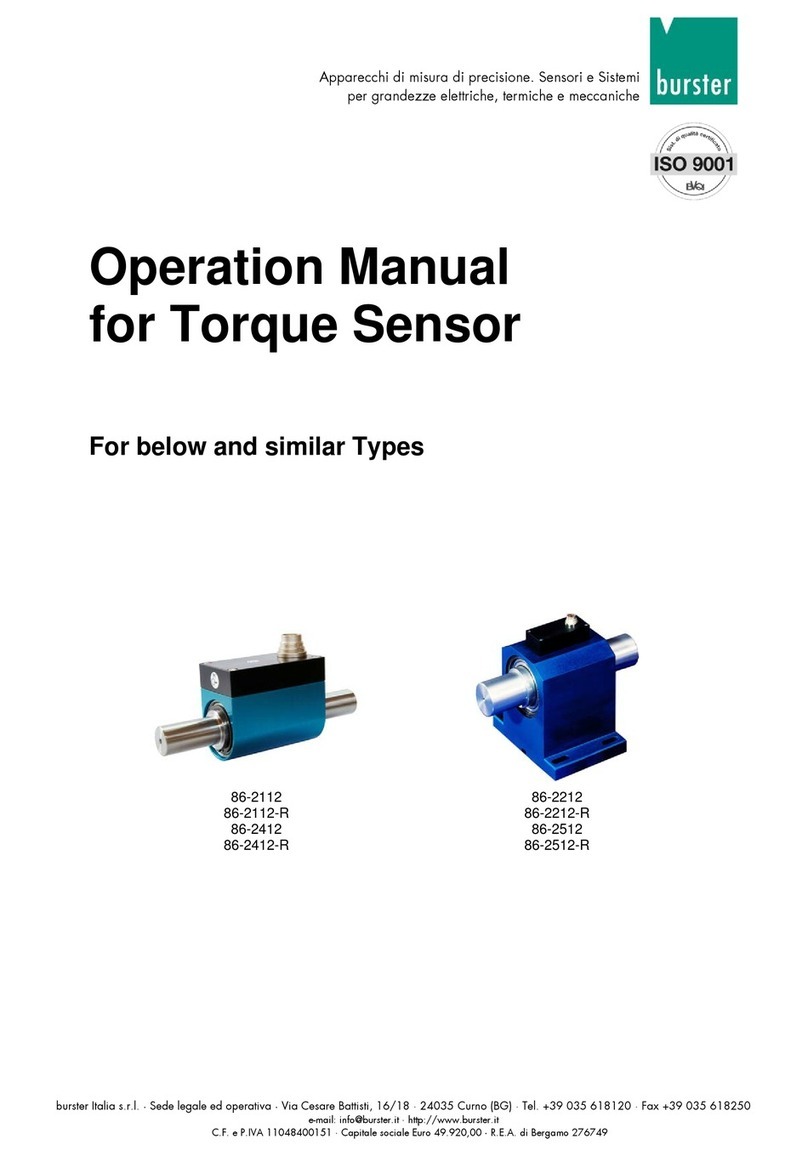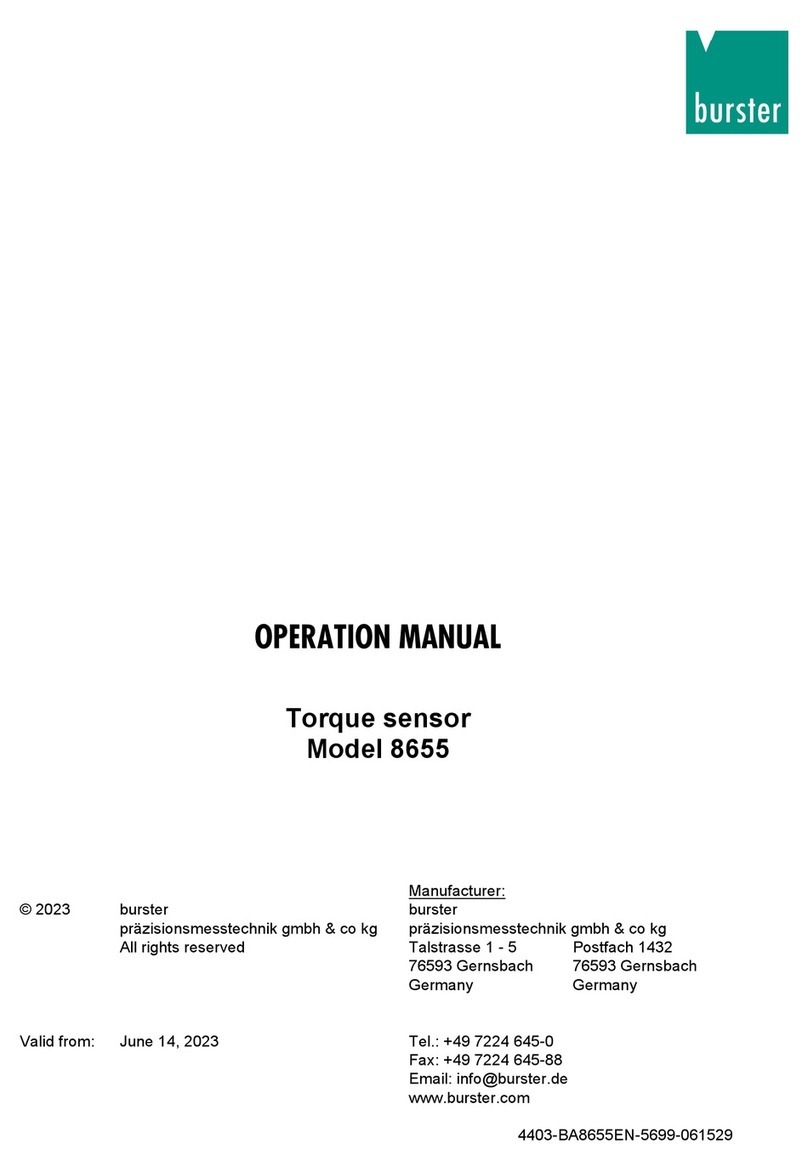Technical Product Information
Start-up, Operation, Installation Instructions Type 8402
-4-
burster präzisionsmeßtechnik gmbh & co kg .Talstr. 1-5 D-76593 Gernsbach (P.O.Box 1432 D-76587 Gernsbach) Tel. +49-7224-6450 .Fax 645-88
For that reason, if it is at all possible avoid placing the load cell and the measuring instrument in the vicinity of powerful
switching stations or gears. (Examples: transformers, motors, contactors, frequency converters). The electromagnetic
fields could unabatedly affect the measuring instrument and load cell and thus lead to falsified results.
The measuring leads may not be laid in parallel to power carrying lines because inductive as well as capacitive
disturbances could get coupled into the measuring lines.
In some cases it has proven useful to pull an added screen over the measuring cable to give added protection or to lay
the cable in a metal tube or pipe.
5. Calibration of the measuring system
An existing measuring configuration comprising load cell and measurement amplifier can be calibrated using various
methods. Using methods 5.2 or 5.3 only the measurement amplifier is calibrated, that means only errors in the sensor
are tracked. If the corresponding equipment as stated under 5.1 is not available the load cell or the measuring
configuration can be calibrated in the factory.
5.1 With physical variables
Function
The load cell is fed with known physical variables.
Example: A scale or balancing device consisting of a load cell and a indicating instrument is relieved of load and the
zero point adjusted. Then a known reference weight is placed on the device and the final value is set.
Factory calibrating certification for the load cell or the entire measuring configuration can be performed on request -
also for recalibrations - in the factory on weight measuring systems.
For direct contact Mr. H. Bok +49-7224-64545
or Mr. H. J. Legat +49-7224-64557
5.2 With strain gauge simulator
Function
By the strain gauge simulator we mean a substitute bridge circuit comprising precision resistors, which is able to assume
various output states. The strain gauge simulator is connected to the measurement amplifier instead of the sensor
(e.g. with burster simulator Type 9405).
5.3 With precision voltage source
Function
The sensor is simulated using a precision voltage source (e.g. burster DIGISTANT®Types 4405, 4422), which is
connected to the measuring amplifier.
Note: Please bear in mind that in strain gauge full-bridge sensors the excitation voltage enters the measurement
result. It is possible that the actual feed voltage slightly deviates from the nominal feed voltage. If you would like to verify
the functionality of the measurement amplifier using voltage sources, you must measure the sensor excitation voltage
with a precision digital voltmeter and then calculate the calibration voltage.
5.4 Shunt calibration
Function
During shunt calibration a precision resistor (calibration shunt) is connected between (-) signal input and (-) excitation.
The precision resistor tunes the bridge so that for a certain degree of elongation it corresponds to a certain load of the
sensor.
This defined bridge tuning brings about a defined step change of the output signal with which the entire measurement
configuration is calibrated. The amplitude of the output signal's step change and the value of the corresponding
calibration shunt are specified in the calibration certificate of the sensor.
This method only tests the sensor's electrical function, its properties in a measurement circuit have not yet been verified.
Important note:
The authors have carefully prepared, compiled and reproduced all of the technical specifications and programs contained in this document using
stringent quality control measures. Nevertheless errors cannot be ruled out. For that reason burster präzisionsmeßtechnik feels obliged to point out
that neither a guaranty nor any kind of liability can be assumed for consequences resulting from faulty specifications, accidental damage or claims
thereof. Furthermore, there can be no guaranty for the material, quality or specific applicability. This document does not claim to be error-free and
is subject to technical alterations.
The authors are always grateful to receive any notification of errors contained herein. Version,Jan. 2002


